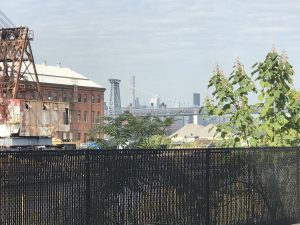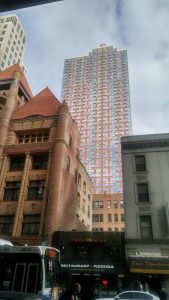use our senses: what are all the different sensory experiences you have there on site? be detailed! Definitely *sight, maybe also *touch, *sound or its absence, or a soundtrack you layered on to the juxtaposition, *smell, *taste?
[think about time of day, time of year, climate, weather, etc]
Use your photograph as well as the experience of being on location
well-organized essay: organize your ideas into paragraphs!
900-1200 words: use this as a guide to get a sense of scope, to drive your revision, but not to make your language awkward and repetitive
make a claim: this is your argument. It comes at the beginning of your work (usually end of first paragraph) and you express it as a thesis statement. Then you bring your ideas back to this point throughout.
juxtapose/compare the elements: the bulk of the writing, very detailed, think about organizing your comparison into a point-by-point or block format or some combination of the two.
use 2 quotations: use these to support your claim, or to push against to make your claim. Your ideas are primary, theirs are secondary, so not in the introduction. Better to include these as you’re making your argument/doing the comparison, though there is a way to bring one (maybe both) quotations into your conclusion–this is much trickier.
You can refer to the ideas from these quotations throughout your project.
OUTLINE:
Write a rough draft of your outline of Project #3. Be as specific as possible.
Section 1: Introduction with claim
Section 2: Describe the sensory experience at the location [this could be divided into each point in your comparison]
OR describe where the location is, or where it is in relation to City Tech OR the story it tells you, OR why it’s important
Judge for yourself: how important is it to include things like 1-how to get there; 2-story it tells you; 3-why it is important to you; 4-sensory experience
Section3:(point 1) time frame of the two elements of the juxtaposition
Another possibility:
Introduction
similarities
differences
(point 1, point 2, point3, in different sections)
more about juxtaposition
conclusion
OR
Introduction
More about juxtaposition/claim (here or after more comparison) Q might go here
point 1
(element 1)
(element 2)
Q might go here
point 2
(element 1)
(element 2)
Q might go here
point 3
(element 1)
(element 2)
point 4
(element 1)
(element 2)
Draft to submit for comments (to guide future revision): 10/31





